Getting Up-Close With The Urwerk UR-112 Aggregat Odyssee
The brand's latest SciFi creation features the very best of Urwerk.
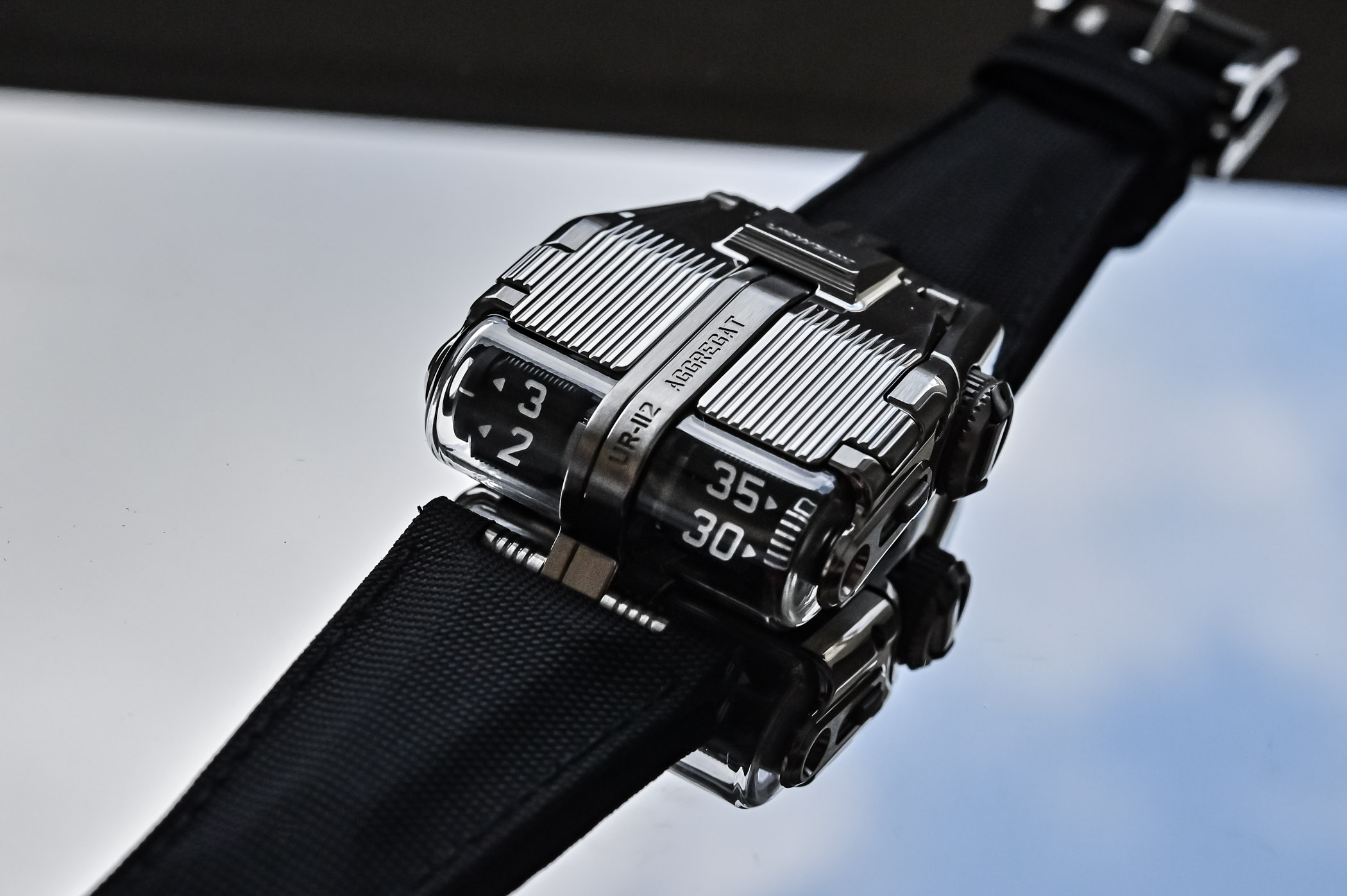
The story of Urwerk started 25 years ago when in 1997 Felix Baumgartner and Martin Frei introduced the Urwerk UR-101 and UR-102 models. Both featured an unconventional display of time, based on the concept of a wandering hour system. The UR-101 and UR-102 had a minimalistic pebble-like design with an arched window revealing the passing, jumping hour/minutes indication. A few years later, the UR103.01 would introduce us to the style Urwerk would portray for more than a decade. And throughout all of its 25 years (can we see some celebratory pieces on the horizon?) Urwerk has expanded its highly original concept into unknown, architectural and science-fiction-like directions. Watches with oil change indicators, hour and minute rollers, timing satellites, wind turbine systems, amplitude monitoring systems and all sorts of other crazy stuff. With the anniversary on the horizon, we take a more detailed look at one of the latest contraptions, the Urwerk UR-112 Aggregat Odyssee.
If you would take a closer look at Urwerk’s portfolio from inception to now, you can see the style evolve from very clean yet captivating to expressive and extremely technical. Even though Felix and Martin started with the UR-101 and UR-102, the actual dream creation would be the aforementioned UR-103.01. That doesn’t mean the first watches were insignificant, but merely implies it took the two men a few years to nail their dream watch and present it to the public. The shaped case would be dominated by an oversized crown placed on the top end of the case. A curved window would reveal a satellite-like hour pointer transversing along a minute track from right to left. As each hour passed, the next hour indication would come into sight and start a new 60-minute journey. This display would become the signature style for the brand, with most present-day still showing signs of Urwerk’s early days.
While the Urwerk UR-103.01 showed an unconventional display of time, it was presented with a rather sleek stainless steel case that in retrospect almost had a sort-of Art Deco vibe to it. Those days are long gone though, as with each collection Urwerk has presented since, the designs became more and more architectural and futuristic. The Urwerk UR-112 Aggregat Odyssee speaks volumes of that progression, as the 42mm wide, 51mm tall and 16mm thick watch looks like it came straight out of a SciFi graphic novel. Made up of stainless steel and titanium elements, the origin of some design elements is rather surprising. Sure, it may look otherworldly, but part of the UR-112’s construction is inspired by the streamlined bodies of the Bugatti Aerolithe and Atlantic cars.
Originally presented in a darkened black and grey case, the Odyssee sees a mostly polished exterior, with sandblasted elements as well. This changes the look to something a bit lighter, a bit more welcoming perhaps. The ribbed top section flips up and is unlocked by pressing two pushers mounted on either side of the case. The central spine separated the watch into two halves, reminiscent of the spine that runs over the entire body of the aforementioned Bugatti cars. It also bears the watch’s full name down the centre. On the right side of the case, there is a flip-up style crown used for setting and winding the watch. Round the back, things are kept simple with just a partial continuation of the grooves on top, and a cap which bears the watch’s limitation. With all this being said, the most stand-out features of the case by far are the two cylindrical sapphire crystal containers on the front.
These sapphire crystal cylinders contain the timing indications for the UR-112 Aggregat Odyssee. Suspended inside are four aluminium satellites for the jumping hour indication on the left, and four satellites for the rotating minute display on the right. For the hours, single digits are engraved onto rotating prisms which jump into place as a full hour has passed. The minutes work a little bit different as the prisms show only 5-minute digits (so 05, 10, 15 etc) with an additional scale for the single minutes. Contrary to the hours, the minute prisms do not jump but gradually rotate as time passes. The prism mechanism is connected to the movement by a complex differential system with a central axle transferring the horizontal drive to a vertical motion. The UR-112 also comes with a small running seconds indication and a power reserve display, hidden underneath the flip-up hood. Sapphire crystal windows reveal the analogue PR indication, with a red plaque framing the digital seconds readout. All indications are coated in Super-LumiNova which glows in a blue hue.
The Urwerk UR-112 relies on the automatic Calibre UR 13.01. We’ve already established what this movement indicates, but how it does it needs some explaining as well. The beauty of the system for the hours and minutes is that, as time progresses, the motion of the minute prism system accumulates energy for the jump of the hour mechanism. So as a full hour comes up, the built-up torque is released and instantly jumps the hour prisms forward one position. This results in a visual spectacle reminiscent of old Solari displays, found in train stations and airports and often used for arrival and departure times. The movement uses 66 jewels, runs at a frequency of 4Hz, or 18,800vph and provides a total of 48 hours of running time when fully wound. And even though you don’t actually get to see much of the mechanical wizardry inside, other than the satellite system and additional displays, the finishing is of the highest level with Côtes de Genève, perlage, polished screw heads, several types of graining and more.
As most Urwerk watches go, the strap isn’t exactly standard either. Not content with a simple leather strap, as that would not match the futuristic vibe of the UR-112, Urwerk opted for a more tactical textile leather strap with padding inside to give it a more angular design. This is attached to the case through a very distinct lug construction if you can call it lugs at all. The strap starts almost as wide as the case before tapering down to a more sensible width and ending in a titanium pin buckle. The whole section is reinforced with a leather strap. Now, the UR-112 Aggregat was never going to be a big seller for the brand due to its complexity. Watches like this tend to take quite a bit of time to assemble so put pressure on a brand’s production capacity. Hence the reason why the original UR-112 Aggregat was limited to 25 pieces, and the UR-112 Aggregat Odyssee we’ll be produced in even lower numbers. The price for all of this mechanical wizardry is an eye-watering CHF 250,000.
For more information, please visit Urwerk.com.

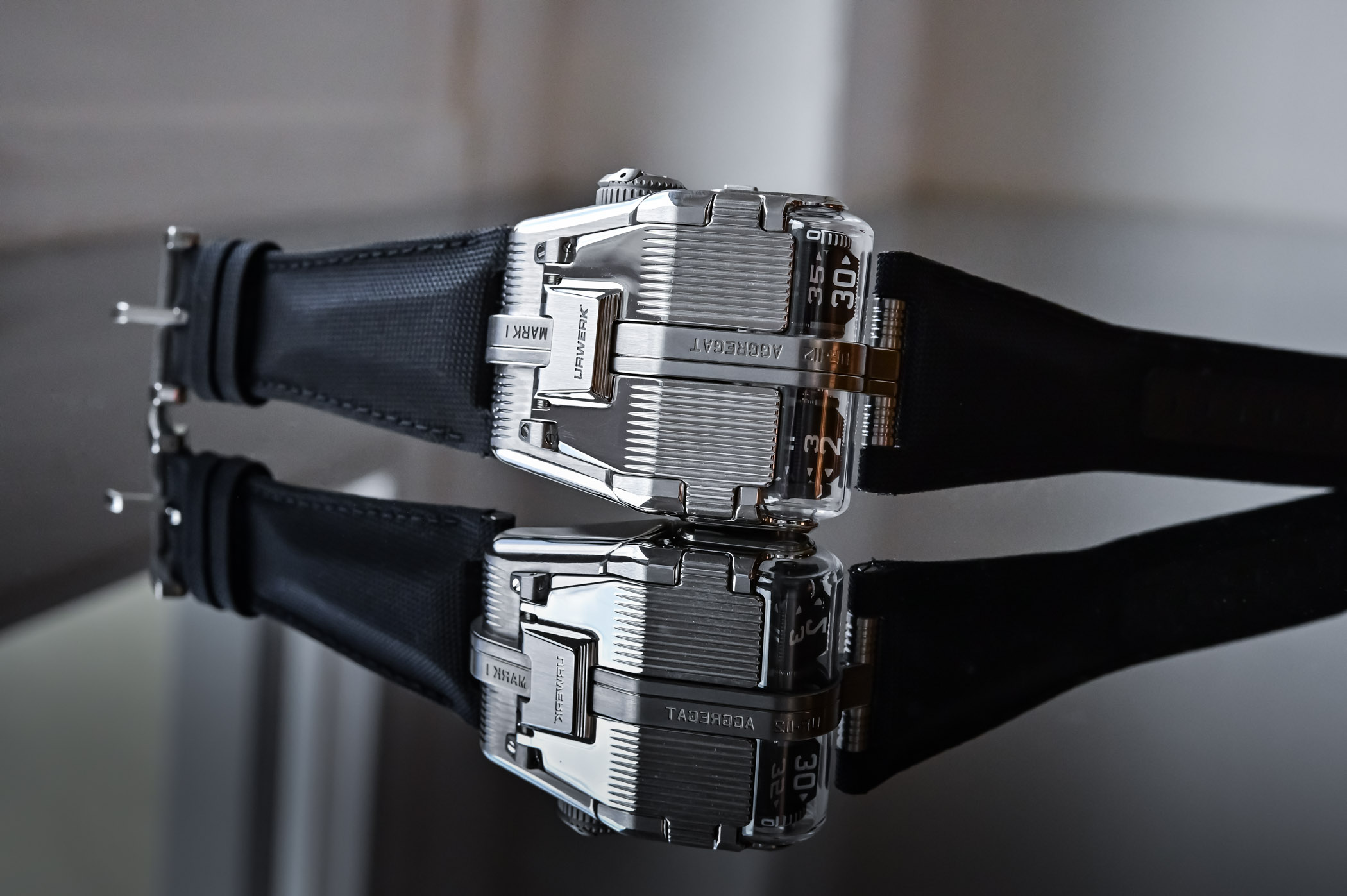
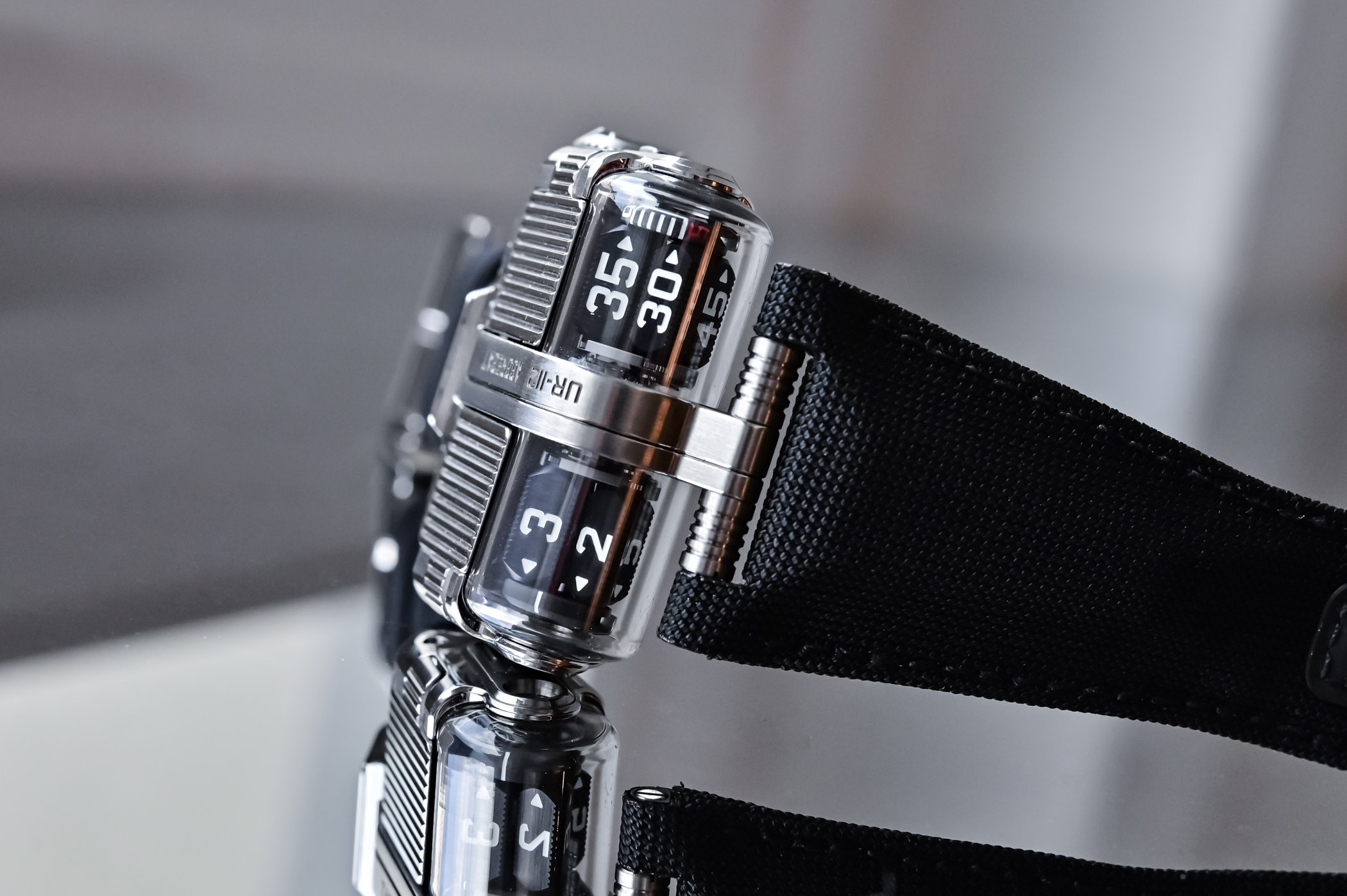

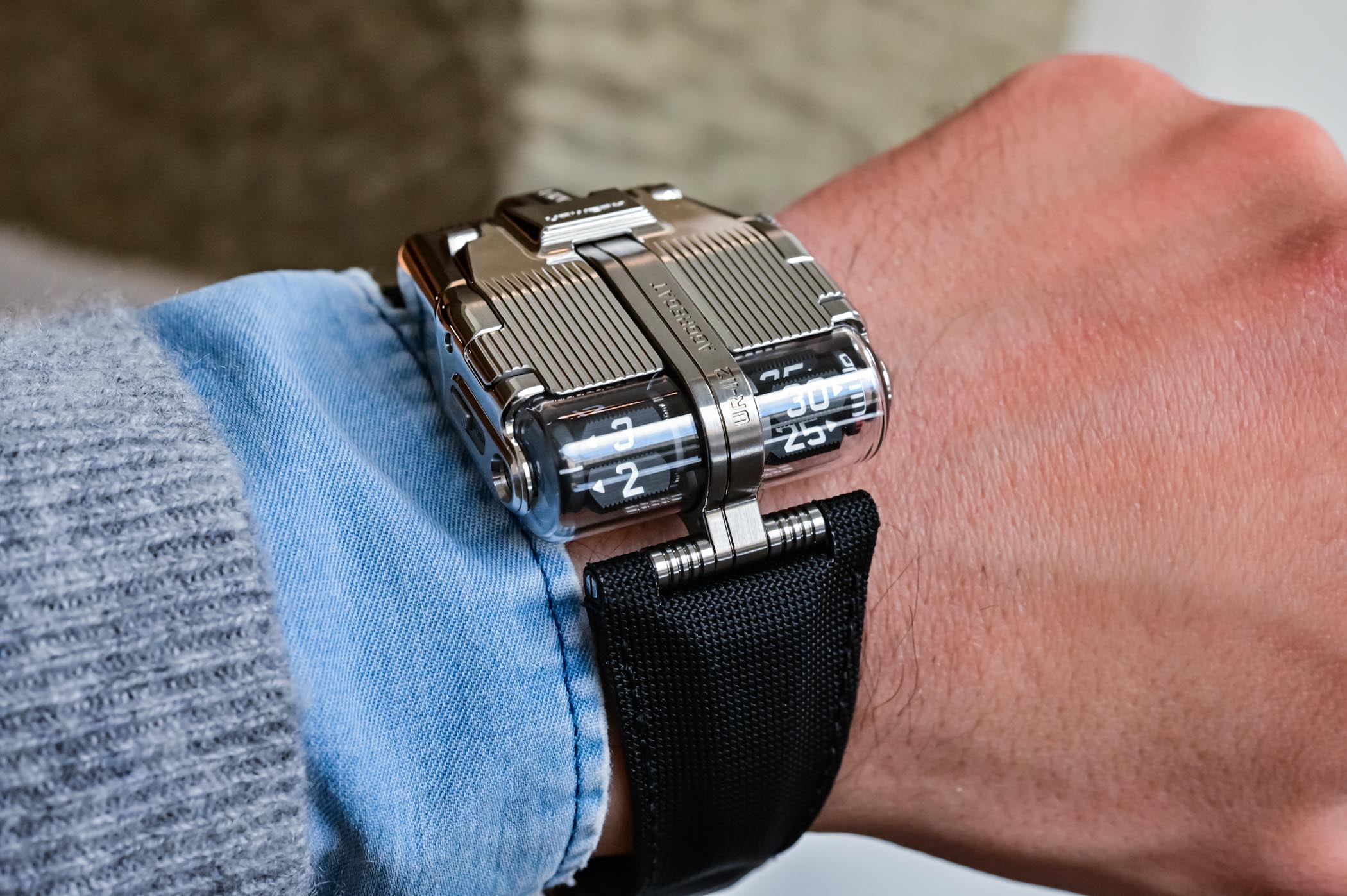

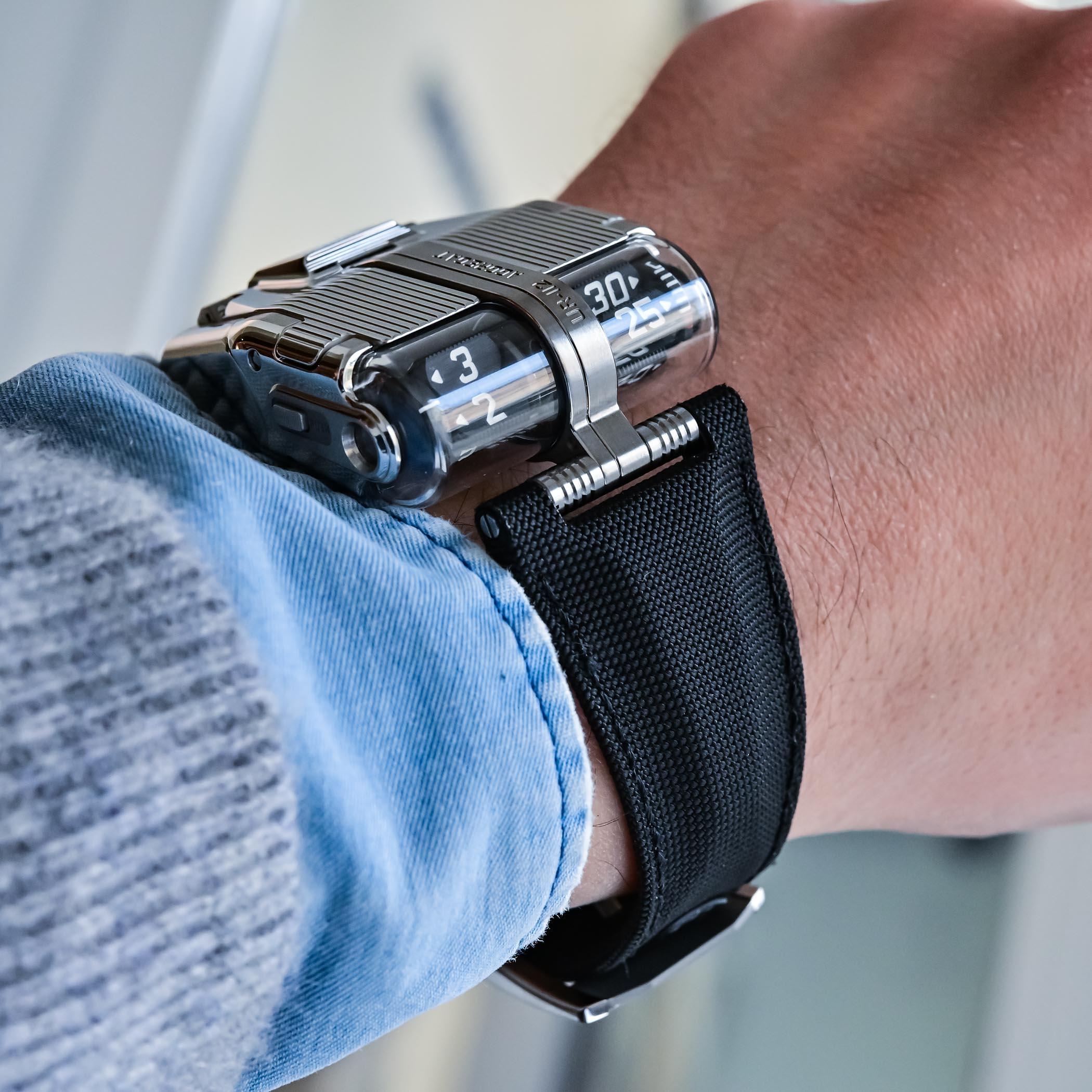

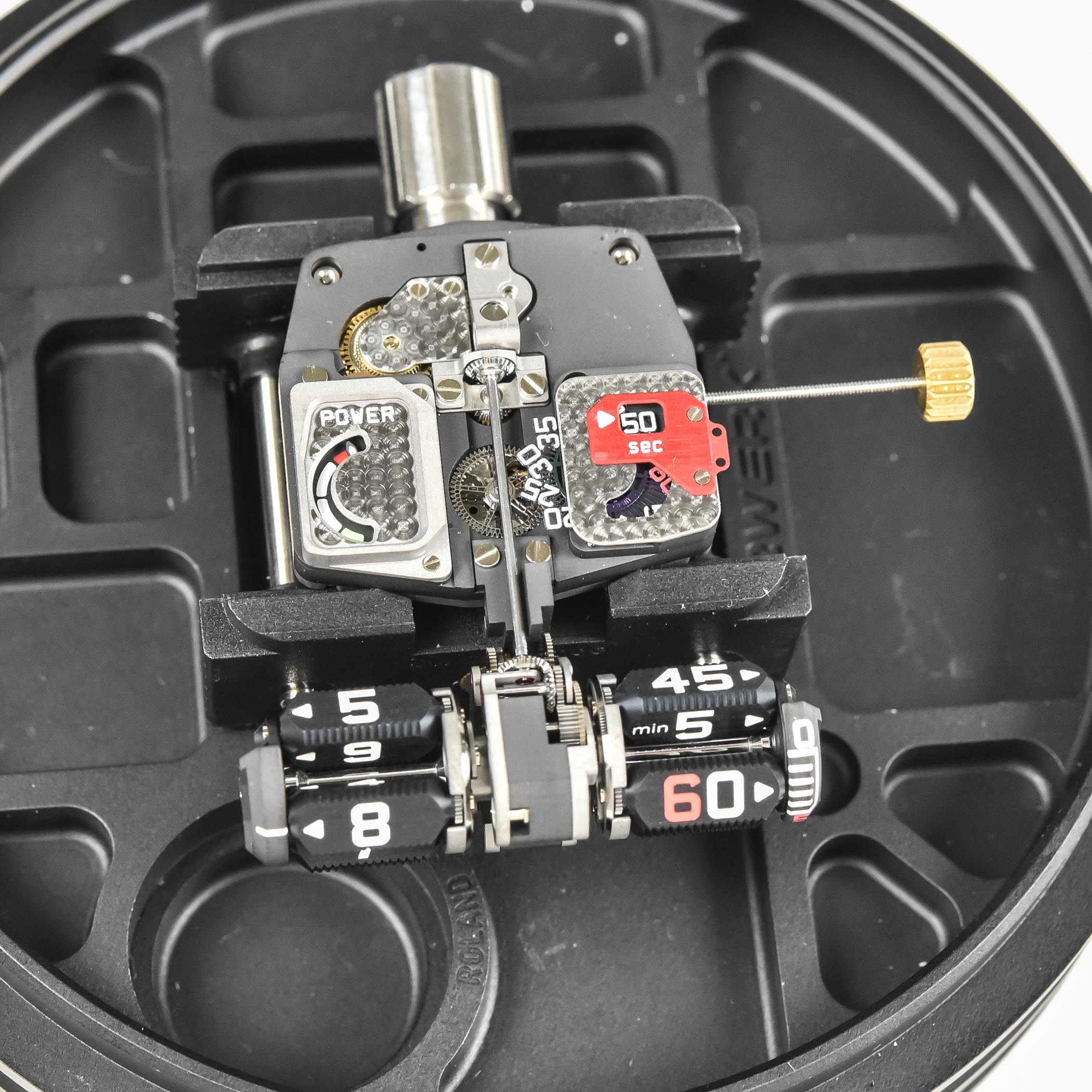
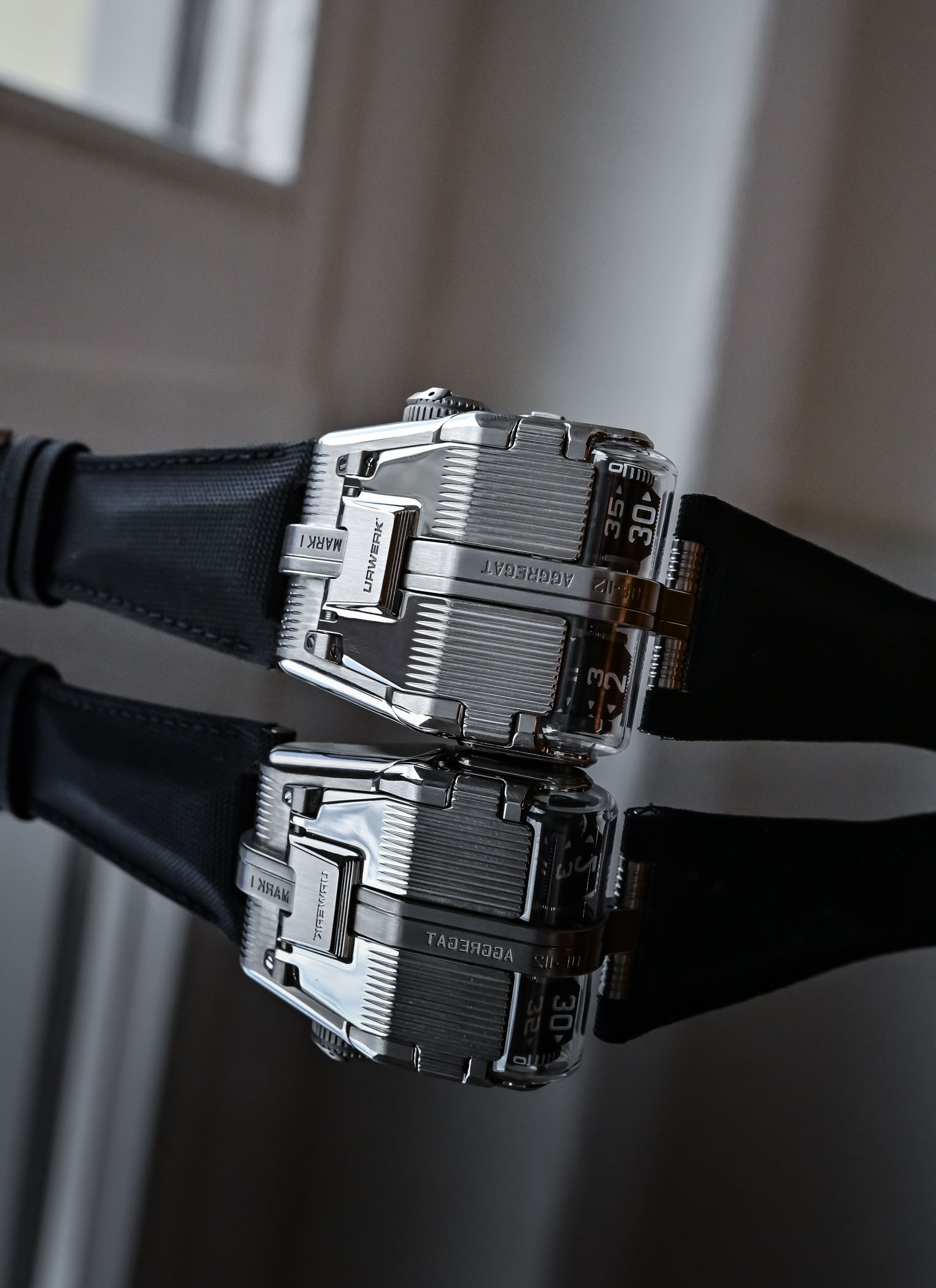



2 responses
I guess I could add one more watch to the collection ? I mean , at these prices , who could resist ? ?
Honestly, this timepiece is purely a work of art which will possibly fetch significantly more at auction. It should never be worn, except at the most memorable of events (during a spacewalk orbiting a local asteroid?)–adding even more to its worth.
However, my U.S. $20 100m Casio Chronograph alarm with 10 yr. battery life that I procured at Target on Black Friday is just fine until this watch will sell for 5 million U.S. $. How much will my Casio sell for in 10 yrs when the gavel drops at Phillips? LOL–so much for a fantasy fantastic timepiece brought to life (not the Casio)!